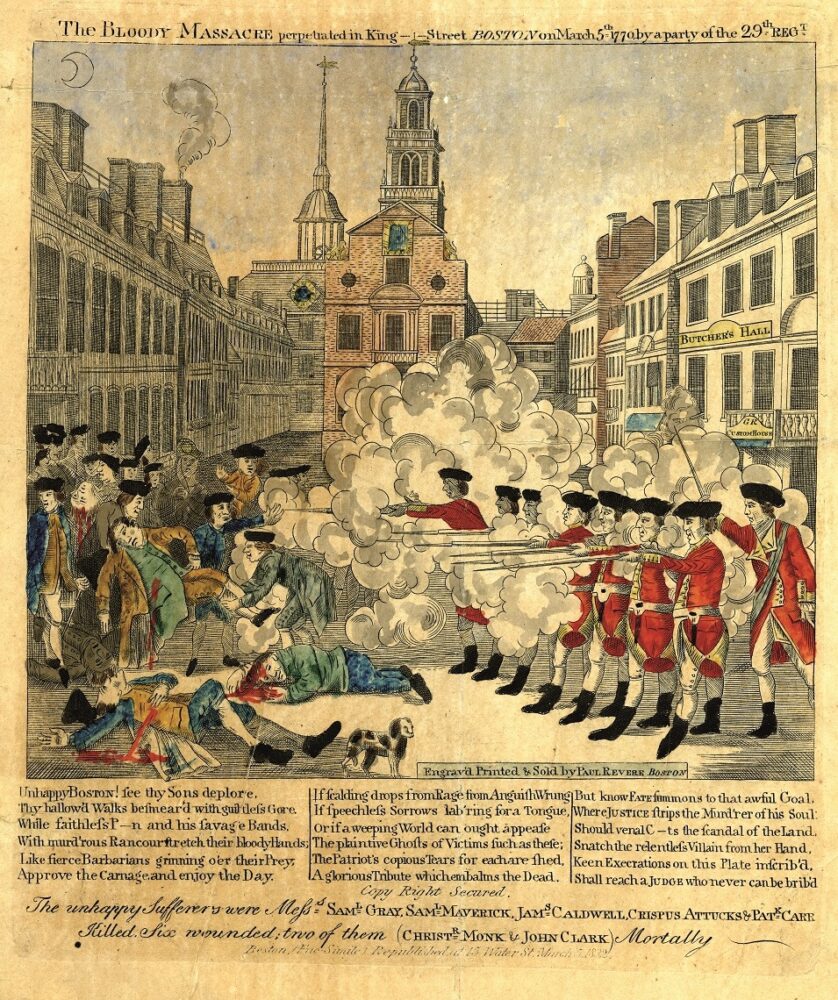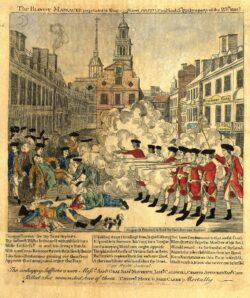American Democracy: A Great Leap of Faith
Examining democracy in a traveling exhibition
Published: May 31, 2023
Last Updated: August 31, 2023

Library of Congress
Paul Revere, The Bloody Massacre, 1770. Woodcut.
The “Great Leap of Faith” in the title reflects the uncertainty—particularly acute in our nation’s early decades, but alive to this day—that a polity governed “of, by, and for the people” could survive and thrive. The role of governing traditionally was performed by elites, and common people had no voice in political decisions. Going back to ancient Greece, earlier attempts at republics and democracies had failed. Thus, American democracy emerged as a bold experiment in participatory government, one that would take decades to expand and refine. As we have seen, it’s still very much a work in progress.
Like the original exhibition in Washington, DC, American Democracy features artifacts from the Smithsonian’s collections as well as multimedia experiences, hands-on interactives, and an immersive gallery design that guides visitors through more than 250 years of US history. Moreover, the New Orleans version of the exhibit will include a handful of objects and stories from THNOC to better connect national history to our city and region.
The gallery experience comprises six “chapters,” each centering on a specific era or theme. The first section of the show explores the origins of the US political system, the creation of our Constitution, and the great debates about the meaning of a government “by the people”—specifically, the question of who would be able to participate. The second section examines the right to vote, the various struggles to obtain it, and the ongoing negotiations around this fundamental civic duty, while the third looks at political activities and institutions that are not explicitly spelled out in the Constitution, such as political parties, campaigns, and conventions. Section four goes beyond the ballot to explore how groups and individuals have brought their concerns and interests into the public arena through petitions, activism, and lobbying. The fifth section invites us to consider the rights and responsibilities associated with American citizenship, as well as the question of what it means to be a citizen. A concluding section ties the entire narrative together and reinforces the idea that citizen participation is crucial to the success and sustainability of American democracy.
Objects from the National Museum of American History are exhibition highlights, and these include a reproduction of Thomas Jefferson’s writing box used to draft the Declaration of Independence, various nineteenth-century campaign ribbons and a campaign torch used in a parade, a National Suffrage Convention delegate badge from 1916, political posters from different campaigns and eras, and a 1943 series of illustrations from Norman Rockwell illustrating fundamental American freedoms.
Each section includes objects, some of which are touchable, as well as multimedia displays and interactives that reinforce the participatory aspects of our democratic system. Part of the museum space will be used as a “Unity Square” for educational presentations and activities related to the exhibition, and THNOC will offer a number of related programs while it is on view.
Additionally, American Democracy will be complemented by a THNOC exhibition about the local fight for women’s suffrage, titled “Yet She Is Advancing”: New Orleans Women and the Right to Vote, 1878–1970. Both exhibitions will be presented to the public free of charge. Our hope is that the experience will engender constructive discussion about what works in our participatory democracy, and what we can collectively improve upon.
—Jason Wiese, chief curator, THNOC
